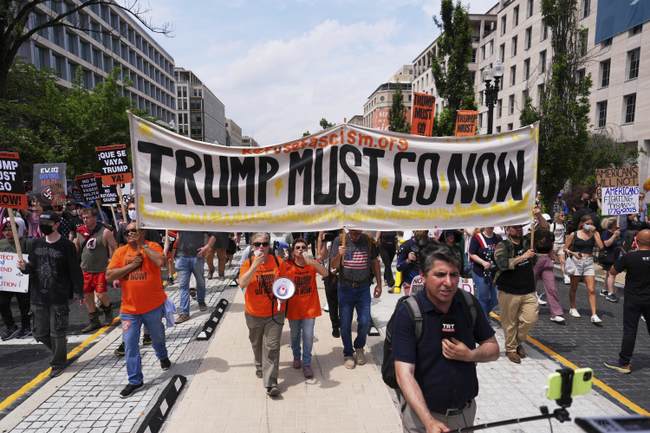Protests branded “Rage Against the Regime” unfolded in various cities across the United States on March 23, 2024. Organized by the political group known as 50501, which advocates for extensive protest efforts across all 50 states, these demonstrations drew a notable turnout of older individuals. Many participants, some in their eighties, abandoned their usual weekend activities to voice their discontent with the current political climate, particularly targeting President Donald Trump.
The rallies were reminiscent of the protest movements of the 1960s. Across the nation, participants chanted slogans and expressed their grievances against what they described as oppressive governance. In Raleigh, North Carolina, the crowd included a mix of older activists who engaged in spirited chants despite mobility challenges. As one participant noted, the atmosphere felt both nostalgic and urgent, echoing sentiments from decades past.
In addition to Raleigh, the protests also attracted attention in Petoskey, Michigan, where local residents gathered to voice similar frustrations. Photos from the event depicted a mix of enthusiasm and a somewhat subdued energy, as many attendees appeared to be enjoying the communal experience rather than exhibiting fierce outrage.
Another notable gathering took place in Nashua, New Hampshire, where state representative Will Darby actively participated, attempting to mediate discussions among attendees. His presence highlighted the ongoing dialogue surrounding contentious social issues, although not all conversations were peaceful. Reports indicated some attendees were agitated, with remarks reflecting deep-seated frustrations.
In Harrisburg, Pennsylvania, the turnout included individuals who appeared unfamiliar with recent political developments, fueling a sense of irony among observers. Despite these quirks, the gathering maintained a festive atmosphere with attendees sharing experiences and engaging in lighthearted activities.
The protests were notably more vibrant in larger urban areas like Atlanta and New York City, where younger activists joined older generations, creating a diverse coalition of voices against the current administration. This blend of demographics added a layer of complexity to the demonstrations, illustrating a cross-generational desire for change.
While the events aimed to highlight opposition to the current regime, many observers noted that the overall energy was less intense than anticipated. The rallies appeared to resemble social gatherings more than fervent protests, with many participants engaging in camaraderie rather than confrontation.
As the day progressed, reports emerged suggesting that local businesses, particularly diners, experienced increased patronage, with some establishments exceeding sales projections. This phenomenon, albeit anecdotal, underscored the social aspect of the protests, as many attendees likely sought to enjoy meals together after participating in the demonstrations.
In summary, the “Rage Against the Regime” protests showcased a mix of nostalgia and activism. While the numbers may not have met expectations, the events offered older generations an opportunity to reconnect with their activist roots, fostering a sense of community and shared purpose. As the political landscape continues to evolve, the voices of these seasoned activists remain a noteworthy element of the ongoing dialogue surrounding governance and societal change.
